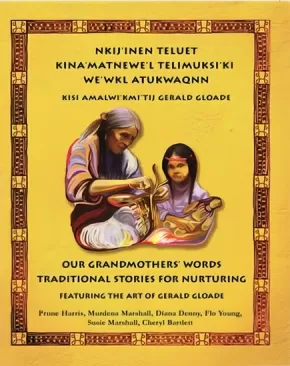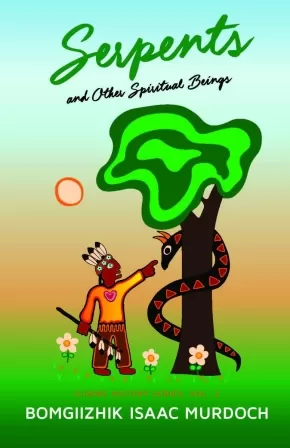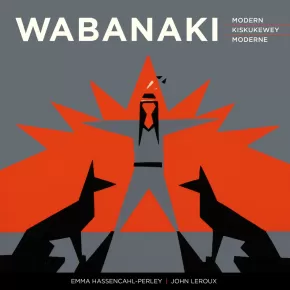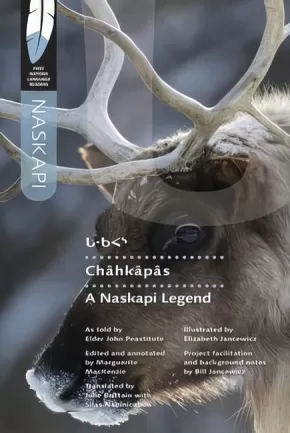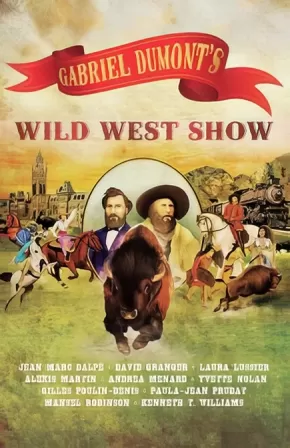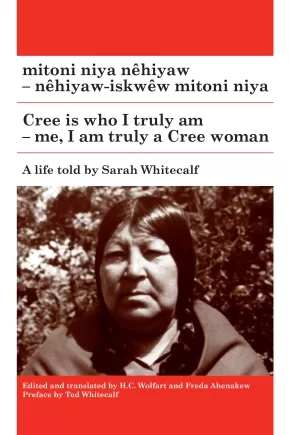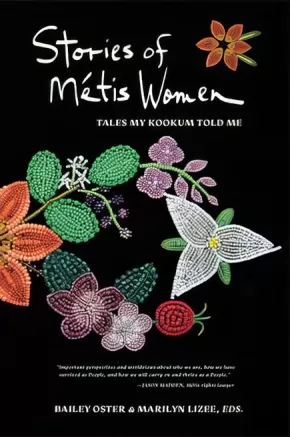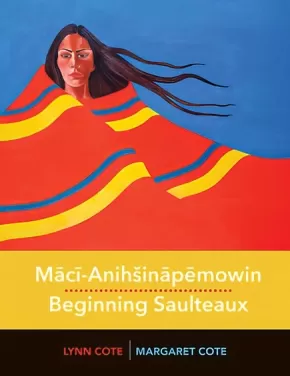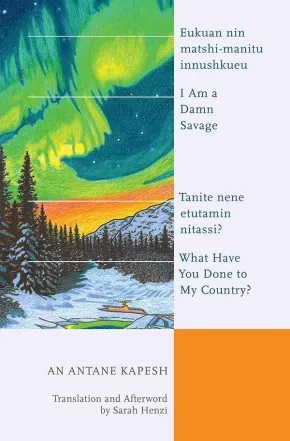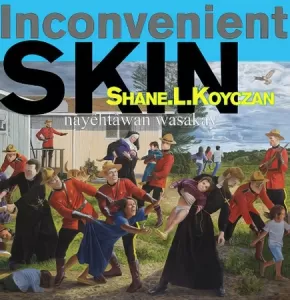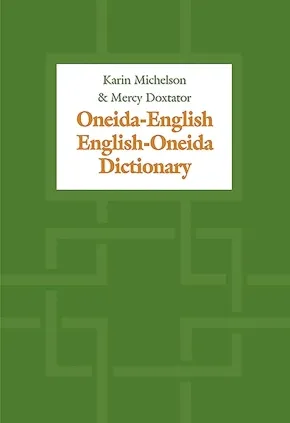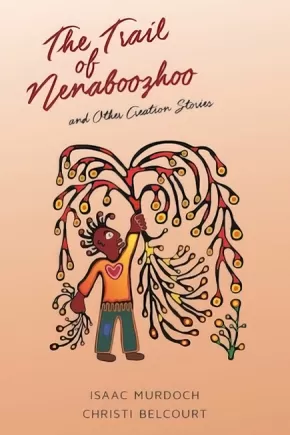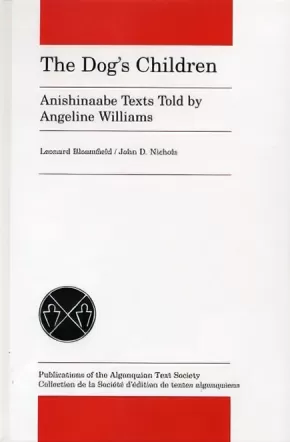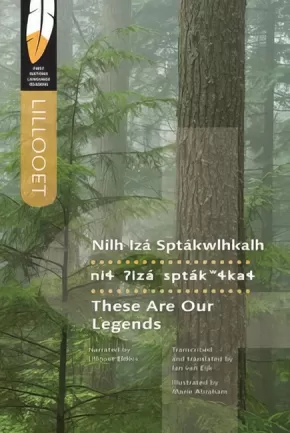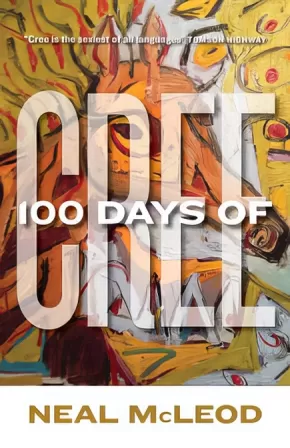
Dual or Triple Language
16
-
30
of
38 Results;
Sort By
Go To
of 3
Nkij'inen Teluet / Our Grandmothers' Words : Traditional Stories For Nurturing
$14.95
Format:
Paperback
Text Content Territories:
Indigenous Canadian; First Nations; Mi'kmaq;
ISBN / Barcode: 9781774710869
Synopsis:
Synopsis:
Through traditional stories, Grandmothers' understandings guide and nurture parents and children as they grow together.
Sali'j is a Mi'kmaw woman. She is strong, she is happy. Happy to be part of a loving family, happy to be Mi'kmaq. She begins to notice changes to her body, subtle at first, then more noticeable. She realizes that she is pregnant. She and her husband rejoice to think of welcoming a child into their lives. She goes to her Mother, to her Grandmother, to her Godmother. She tells them she is pregnant. They hug her in joy.
They gather their knowledge and their wisdom from teachings passed down from woman to woman, over the generations; they share this knowledge, little by little, story by story. This is the Mi'kmaw way.
Educator Information
Dual-language: English and Mi'kmaq.
This book is created by Prune Harris from the words and wisdom of four Grandmothers from the Mi’kmaw Nation of Eskasoni. They are Diana Denny, Murdena Marshall, Susie Marshall and Veronica (Flo) Young.
Additional Information
64 pages | Paperback
Serpents and Other Spiritual Beings
$25.00
Format:
Paperback
Text Content Territories:
Indigenous Canadian; First Nations; Anishinaabeg; Ojibway;
Reading Level: N/A
ISBN / Barcode: 9781928120353
Synopsis:
Synopsis:
Serpents and Other Spiritual Beings is the second book in a series by renowned Ojibwe storyteller Bomgiizhik Isaac Murdoch, following on The Trail of Nenaboozhoo and Other Creation Stories (2019). Serpents and Other Spiritual Beings is a collection of traditional Ojibwe/Anishinaabe stories transliterated directly from Murdoch's oral storytelling. Part history, legend, and mythology, these are stories of tradition, magic and transformation, morality and object lessons, involving powerful spirit-beings in serpent form. The stories appear in both English and Anishinaabemowin, with translations by Patricia BigGeorge. Murdoch's traditional-style Ojibwe artwork provides beautiful illustrations throughout.
Reviews
"'When the Thunderbirds and Serpents fight, they feed off each other, you know great medicine gets cast across the land. We get our life from that.' So writes storyteller Isaac Murdoch as he shares his Elders' stories about tunnels beneath the earth, rich laws, philosophies, teachings, power from up there, down there, and all around us, until we too hear the thunders as they bring us into the world of wahkotowin, all our relations. How privileged and blessed we are to be able to read the Ahtyokaywina of our people."--Maria Campbell, author of Halfbreed
"Gather around, for here are oral stories transcribed so they retain the flavour of a narrative spoken aloud, and translated into Anishinaabemowin; perfect for language-learners. I love the way these stories infuse the spirit world into an every-day context, these are not dusty old legends, but a living way of seeing the world around us in the here and now."--Nathan Niigan Noodin Adler, author of Ghost Lake
Educator & Series Information
Dual-Language: English and Anishinaabemowin.
Anishinaabemowin translation by Patricia BigGeorge, who is an Anishinaabemowin speaker and translator.
This book is Vol. 2 in the Ojibwe History Series.
Additional Information
100 pages | 5.50" x 8.50" | 20 illustrations | Paperback
Wabanaki Modern | Wabanaki Kiskukewey | Wabanaki Moderne
$45.00
Format:
Paperback
Text Content Territories:
Indigenous Canadian; First Nations; Mi'kmaq;
Reading Level: N/A
ISBN / Barcode: 9781773102665
Synopsis:
Synopsis:
The story of an overlooked group of cultural visionaries
The “Micmac Indian Craftsmen” of Elsipogtog (then known as Big Cove) rose to national prominence in the early 1960s. At their peak, they were featured in print media from coast to coast, their work was included in books and exhibitions — including at Expo 67 — and their designs were featured on prints, silkscreened notecards, jewelry, tapestries, and even English porcelain.
Primarily self-taught and deeply rooted in their community, they were among the first modern Indigenous artists in Atlantic Canada. Inspired by traditional Wabanaki stories, they produced an eclectic range of handmade objects that were sophisticated, profound, and eloquent.
By 1966, the withdrawal of government support compromised the Craftsmen's resources, production soon ceased, and their work faded from memory. Now, for the first time, the story of this groundbreaking co-operative and their art is told in full. Accompanying a major exhibition at the Beaverbrook Art Gallery opening in 2022, Wabanaki Modern features essays on the history of this vibrant art workshop, archival photographs of the artisans, and stunning full-colour images of their art.
Wla atukuaqn na ujit ta'nik mu ewi'tamuki'k tetuji kelulkɨpp ta'n teli amaliteka'tijik
Wla “Mi'kmewaqq L'nue'k amaliteka'tijik” tlo'ltijik Elsipogtog (amskweseweyekk i'tlui'tasikɨpp Big Cove) poqji wuli nenupnikk wla amaliteka'tijik 1960ekk. Je wekaw wutlukowaqnmuwow ika'tasikɨpp wikatikniktuk aqq ne'yo'tasikɨpp ta'n pukwelk ta'n wen nmitew — je wekaw Expo 67 — aqq ta'n koqoey kisi napui'kmi'tipp tampasɨk koqoey eweketu'tij stike' l'taqnewi'kasik, napui'kn misekn, wi'katikne'ji'jk, meko'tikl kuntal, kaqapitkl l'taqa'teke'l, aqq wekaw akalasie'we'k eptaqnk. Nekmow na kekina'masultijik aqq melki knukwi'tij ta'n tett telayawultijik, nekmow na amskewsewa'jewaqq l'nu'k tel nenujik ujit ta'n teli amaliteka'tijik ujit Atlantic Canada. Pema'lkwi'titl a'tukuaqnn ta'n sa'qewe'l, ta'n wejiaqel a'tukuaqnn Wabanaki, l'tu'tipp kaqasi milamu'k koqowey toqo eweketu'titl wutpitnual tetuji moqɨtekl, ma'muntekl, aqq weltekl.
Wekaw 1966ekk, kpno'l pun apoqnmuapni wla amaliteka'tikete'jɨk jel kaqnma'tijik ta'n koqoey nuta'tipp, amuj pana pun lukutipnikk, aqq tel awantasuwalutki'k. Nike', amskwesewey, wla a'tukuaqn tetuji msɨki'kɨpp wla wut lukewaqnmuwow etel kaqi a'tukwasikk. Wije'tew meski'k neya'tmk Beaverbrook Art Gallery pana'siktetew 2022al, Wabanaki Modern na pema'toql wikikaqnn ujit ta'n pemiaqɨpp wla tetuji wulamu'kɨpp kisitaqnne'l telukutijik, maskutekl sa'qewe'l napuikasikl toqo nemu'jik etl-lukutijik wla lukewinu'k, aqq sikte wultek aqq welamu'k ta'n koqoey kisitu'tij.
L'histoire d'un groupe de visionnaires culturels ignorés
Un groupe d'artisans mi'kmaw d'Elsipogtog (autrefois Big Cove) au Nouveau-Brunswick se fit connaître à travers le Canada au début des années 1960. À l'apogée de leur renommée, les Micmac Indian Craftsmen firent l'objet d'articles dans des publications d'un océan à l'autre. Leur travail figura dans des livres et des expositions — dont Expo 67 à Montréal — et leurs œuvres graphiques furent reproduites sous forme de gravures et de sérigraphies, et elles ornèrent de la papeterie, des bijoux, des tapisseries et même de la porcelaine anglaise.
En grande partie autodidactes et solidement enracinés dans leur communauté, les Micmac Indian Craftsmen furent parmi les premiers artistes autochtones modernes au Canada atlantique. En s'inspirant de récits traditionnels wabanakis, ils fabriquaient à la main une gamme variée d'objets raffinés, évocateurs et porteurs d'un sens profond.
En 1966, toutefois, le gouvernement retira son soutien. Les Craftsmen perdirent leur financement, la production cessa peu après et leur œuvre finit par être oubliée. Une nouvelle publication relate maintenant, pour la première fois, l'histoire complète de cette coopérative innovatrice et de ses réalisations. Publié dans le cadre d'une grande exposition qui a lieu à la Galerie d'art Beaverbrook en 2022, Wabanaki Moderne comprend des textes sur l'histoire de cet atelier dynamique, des photographies d'archives des artisans et de superbes illustrations couleur de leurs œuvres.
Educator Information
Delivered in three languages: English, Mi'kmaw, and French
Additional Information
228 pages | 10.00" x 10.00" | Paperback | 96 Colour Reproductions and Photos, 26 Black and White Illustrations and Archival Photos
Châhkâpâs: A Naskapi Legend
$24.95
Artists:
Editors:
Format:
Paperback
Text Content Territories:
Indigenous Canadian; First Nations; Innu (Montagnais-Naskapi);
Grade Levels: 12; University/College;
ISBN / Barcode: 9780889778290
Synopsis:
Synopsis:
Châhkâpâs: A Naskapi Legend shares the story of Châhkâpâs, a heroic figure in First Nations storytelling, who performs feats of strength and skill in spite of his diminutive size.
The book shares this traditional legend as originally recorded in the Naskapi community in northern Quebec in 1967 when it was narrated by John Peastitute, a Naskapi Elder and accomplished storyteller. Transcribed in the Naskapi language and syllabic orthography, the book offers a literary resource for the Naskapi language community, and the English translation enables those unfamiliar with the language, or the story, to discover this important legend.
The book also contains extensive analysis of stories about Châhkâpâs, notes about the provenance of the recordings, a biography of the storyteller, and a history of the Naskapi people. Lavish illustrations from Elizabeth Jancewicz—an artist raised in the Naskapi community—provide a sensitive and accurate graphical account of the legend, which has also been approved by Naskapi speakers themselves.
Educator & Series Information
This book is part of the First Nation Language Readers series. With a mix of traditional and new stories, each First Nations Language Reader introduces an Indigenous language and demonstrates how each language is used today.
By John Peastitute
Edited by Marguerite MacKenzie
Translated by Julie Brittain and Silas Nabinicaboo
Illustrated by Elizabeth Jancewicz
Contributions by Bill Jancewicz
Additional Information
264 pages | 6.00" x 9.00" | Paperback
Gabriel Dumont's Wild West Show
$24.95
Format:
Paperback
Text Content Territories:
Indigenous Canadian; Métis;
Grade Levels: 12; University/College;
ISBN / Barcode: 9781772013191
Synopsis:
Synopsis:
Gabriel Dumont’s Wild West Show is a flamboyant epic, constructed as a series of tableaux, about the struggles of the Métis in the Canadian West. It is a multilayered and entertaining saga with a rodeo vibe, loosely based on Buffalo Bill’s legendary outdoor travelling show. In 1885, following the hanging of his friend Louis Riel, bison hunter Gabriel Dumont fled to the United States. There he was recruited by the legendary Buffalo Bill, founder of Buffalo Bill’s Wild West, a gigantic outdoor travelling show that re-enacted life in the American West. It made a huge impression on Dumont, and he dreamed of putting together a similar show to tell the story of the struggle of Canada’s Métis to reclaim their rights.
The creative team behind Gabriel Dumont’s Wild West Show – including ten authors, Indigenous and non-Indigenous, French- and English-speaking men and women – brings Dumont’s dream to life in a captivating, joyously anachronistic saga. The theatrical version of Gabriel Dumont’s Wild West Show presented by the National Arts Centre was one of a number of exceptional projects funded through the Canada Council for the Arts’ New Chapter initiative. (Adapted from nac-cna.ca/en/wildwestshow).
This is a bilingual book, co-published with Éditions Prise de parole, and enhanced with a historical background, a chronology of the Métis Resistances, and visual documents.
Reviews
“Really excellent. I laughed till I cried!” —Marilou Lamontagne, ICI Radio-Canada Ottawa-Gatineau
“[A] play that pleases, puzzles, and provokes, in a form that keeps shifting wildly from one moment to the next like a bucking bronco.”—J. Kelly Nestruck, Globe and Mail
“If Gabriel Dumont’s Wild West Show is so successful, while being funny and sad at the same time, it’s because the creative team did its research and listened to the communities involved in the rehabilitating of the figure of Gabriel Dumont. What takes shape here is a wave of madness and a rewriting of our national narrative.”—Maud Cucchi, JEU Revue de théâtre
“Gabriel Dumont’s Wild West Show is a crazed, fast-paced Métis 101 history lesson, in which acidity and humour deliver the story.”—Martin Vanasse, Radio-Canada
“[A] seamlessly cohesive narrative ... a zany form ... a phantasmagorical piece of pure entertainment ... a delirious blend of historical drama, musical, burlesque cabaret, hockey night, and TV quiz!”—Pierre-Alexandre Buisson
“Between bursts of laughter (of the uneasy sort at times) and moments of lively emotion, Gabriel Dumont’s Wild West Show takes [us] on a journey up hill and down dale through the history of the Métis Resistances and tells an oft-forgotten part of our collective history.” - Valérie Lessard, Le Droit
Additional Information
304 pages | 5.40" x 8.50" | Paperback
mitoni niya nêhiyaw / Cree is who I truly am: nêhiyaw-iskwêw mitoni niya / me, I am truly a Cree woman
$29.95
Editors:
Format:
Paperback
Text Content Territories:
Indigenous Canadian; First Nations; Cree (Nehiyawak);
Grade Levels: University/College;
ISBN / Barcode: 9780887559426
Synopsis:
Synopsis:
Strong women dominate these reminiscences: the grandmother taught the girl whose mother refused to let her go to school, and the life-changing events they witnessed range from the ravages of the influenza epidemic of 1918–20 and murder committed in a jealous rage to the abduction of a young woman by underground spirits who on her release grant her healing powers.
A highly personal document, these memoirs are altogether exceptional in recounting the thoughts and feelings of a Cree woman as she copes with the challenges of reserve life but also, in a key chapter, with her loneliness while tending a relative’s children in a place far away from home – and, apparently just as debilitating, away from the company of other women. Her experiences and reactions throw fresh light on the lives lived by Plains Cree women on the Canadian prairies over much of the twentieth century.
The late Sarah Whitecalf (1919–1991) spoke Cree exclusively, spending most of her life at Nakiwacîhk / Sweetgrass Reserve on the North Saskatchewan River. This is where Leonard Bloomfield was told his Sacred Stories of the Sweet Grass Cree in 1925 and where a decade later David Mandelbaum apprenticed himself to Kâ-miyokîsihkwêw / Fineday, the step-grandfather in whose family Sarah Whitecalf grew up.
In presenting a Cree woman’s view of her world, the texts in this volume directly reflect the spoken word: Sarah Whitecalf’s memoirs are here printed in Cree exactly as she recorded them, with a close English translation on the facing page. They constitute an autobiography of great personal authority and rare authenticity.
Educator Information
Table of Contents
PART I Becoming a Cree woman
Ch. 1—êkosi nikî-pê-ay-itâcihonân / This has been our way of life
Ch. 2—êkosi nikî-tâs-ôy-ohpikihikawin / This is the way I was raised
Ch. 3—mêh-mêskoc nikî-pimohtahikawin / I was taken back and forth
Ch. 4—miton ê-kî-pê-na-nêhiyaw-ôhpikihikawiyân / I was truly raised as a Cree woman
PART II Being a Cree woman
Ch. 5—êwak ôm ê-kî-ay-itâcimisot awa nikâwiy / This is my mother’s own story
Ch. 6—iyikohk ê-kî-sôhkêpayik anima nipahtâkêwin / So horrible was that murder
Ch. 7—ê-nipahi-kâh-kaskêyihtamân / I was desperately lonesome
Ch. 8—pikw êkwa niya / Now I had to take charge
PART III The spiritual life
Ch. 9—ê-sîkâwîhcikêhk / Observing the mourning ritual
Ch. 10—manitow kâ-matwêhikêt / Where the spirits drum (I)
Ch. 11—manitow kâ-matwêhikêt / Where the spirits drum (II)
Ch. 12—manitow kâ-matwêhikêt / Where the spirits drum (III)
Additional Information
366 pages | 6.50" x 9.75"
Stories of Metis Women: Tales My Kookum Told Me
$35.00
Editors:
Format:
Paperback
Text Content Territories:
Indigenous Canadian; Métis;
Reading Level: N/A
ISBN / Barcode: 9781988824215
Synopsis:
Synopsis:
This book, and accompanying Vimeo documentary link, is a collection of stories about culture, history, and nationhood as told by Métis women. The Métis are known by many names — Otipemisiwak, “the people who own ourselves;” Bois Brules, “Burnt Wood;” Apeetogosan, “half brother” by the Cree; “half-breed,” historically; and are also known as “rebels” and “traitors to Canada.” They are also known as the “Forgotten People.” Few really know their story.
Many people may also think that Métis simply means “mixed,” but it does not. They are a people with a unique and proud history and Nation. In this era of reconciliation, Stories of Métis Women explains the story of the Métis Nation from their own perspective. The UN has declared this “The Decade of Indigenous Languages” and Stories of Métis Women is one of the few books available in English and Michif, which is an endangered language.
Reviews
"With this book, some of these important and unique perspectives and worldviews about who we are as a people, how we have survived as people and how we will carry on and thrive as a people are shared through the writings of the daughters, mothers, aunties and grandmothers of the Métis Nation. I congratulate the Métis women who have taken the time to share and write down some of this knowledge for generations to come." —Jason Madden, Métis rights lawyer and citizen of the Métis Nation
Additional Information
240 pages | 6.00" x 9.00" | 50 black and white illustrations | Paperback
Mācī-Anihšināpēmowin / Beginning Saulteaux (10 in Stock) - ON SALE
$30.00 $34.95
Format:
Coil Bound
Text Content Territories:
Indigenous Canadian; First Nations; Anishinaabeg; Ojibway; Saulteaux;
ISBN / Barcode: 9780889777514
Synopsis:
Synopsis:
Mācī-Anihšināpēmowin / Beginning Saulteaux is an introductory look at one of the most widely spoken of all North American Indigenous languages, regionally known as Saulteaux, Ojibway, Ottawa (Odawa), Chippewa, and Algonquian. In an easy-to-use and easy-to-read series of lessons, both designed for self-study or for use in the classroom, Beginning Saulteaux will guide beginners through the language’s grammatical structures and spelling systems, as well as everyday terms and phrases. The book grounds the language in both traditional and contemporary contexts, and sheds light on the Saulteaux world view. For example, there is no word for good-bye in the language, so upon parting people will usually say Kika-wāpamin mīnawā, meaning “I’ll see you again.”
Educator & Series Information
The third in our Indigenous Languages for Beginners series, Beginning Saulteaux is an invaluable resource produced in consultation with Elders, Language Keepers, and community members, and continues our commitment to revitalizing Indigenous languages.
Additional Information
304 pages | 8.50" x 11.00" | Spiral Bound
I Am a Damn Savage; What Have You Done to My Country?
$22.99
Format:
Paperback
Text Content Territories:
Indigenous Canadian; First Nations; Innu (Montagnais-Naskapi);
Grade Levels: University/College;
ISBN / Barcode: 9781771124089
Synopsis:
Synopsis:
Quebec author An Antane Kapesh's two books, Je suis une maudite sauvagesse (1976) and Qu'as-tu fait de mon pays? (1979), are among the foregrounding works by Indigenous women in Canada. This English translation of these works, presented alongside the revised Innu text, makes them available for the first time to a broader readership.
In I Am a Damn Savage, Antane Kapesh wrote to preserve and share her culture, experience, and knowledge, all of which, she felt, were disappearing at an alarming rate because many Elders – like herself – were aged or dying. She wanted to publicly denounce the conditions in which she and the Innu were made to live, and to address the changes she was witnessing due to land dispossession and loss of hunting territory, police brutality, and the effects of the residential school system. What Have You Done to My Country? is a fictional account by a young boy of the arrival of les Polichinelles and their subsequent assault on the land and on native language and culture.
Through these stories Antane Kapesh asserts that settler society will eventually have to take responsibility and recognize its faults, and accept that the Innu – as well as all the other nations – are not going anywhere, that they are not a problem settlers can make disappear.
Additional Information
216 pages | 5.25" x 8.00" | Translation and Afterword by Sarah Henzi
Inconvenient Skin / nayêhtâwan wasakay
$29.95
Artists:
Format:
Hardcover
Text Content Territories:
Indigenous Canadian;
ISBN / Barcode: 9781926886510
Synopsis:
Synopsis:
Inconvenient Skin challenges how reconciliation has become a contested buzzword filled with promises and good intentions but rarely any meaningful follow-through. While Canada's history is filled with darkness, these poems aim to unpack that history to clean the wounds so the nation can finally heal. Powerful and thought-provoking, this collection will draw you in and make you reconsider Canada's colonial legacy. The cover features the art of Kent Monkman, and the interior features work by Joseph Sanchez, a member of the Indian Group of Seven.
Written in English and Cree.
Educator Information
This collection of poems features Shane Koyczan's well-known poem, "Inconvenient Skin," delivered in a dual-language format of English and Cree and paired with illustrations, artwork, and photography.
Recommended in the Canadian Indigenous Books for Schools 2019-2020 resource list as being useful for grades 11 and 12 for these subjects: Art Education, English Language Arts.
This poem talks about sexual assault, genocide, and violence. Some of the artwork shows violence and nudity. This could be triggering for some readers.
Additional Information
80 pages | 8.50" x 8.50" | Colour Illustrations
Oneida-English/English-Oneida Dictionary
$163.00
Format:
Paperback
Text Content Territories:
Indigenous Canadian; First Nations; Haudenosaunee (Iroquois); Oneida (Onyota'a:ka);
Grade Levels: University/College;
ISBN / Barcode: 9781487525170
Synopsis:
Synopsis:
Oneida is an endangered Iroquoian language spoken fluently by fewer than 250 people. This is the first comprehensive dictionary of the Oneida language as used in Ontario, where most of the surviving speakers reside.
The dictionary contains both Oneida-English and English-Oneida sections. The Oneida-English portion includes some 6000 entries, presenting lexical bases, particles and grammatical morphemes. Each entry for a base shows several forms; illustrates inflection, meaning and use; and gives details regarding pronunciation and cultural significance. The English-Oneida entries direct the reader to the relevant base in the Oneida-English section, where technical information is provided. Completing the volume is a set of appendices that organizes Oneida words into thematic categories.
The Iroquoian languages have an unusually complex word structure, in which lexical bases are surrounded by layers of prefixes and suffixes. This dictionary presents and explains that structure in the clearest possible terms. A work of enormous precision and care, it incorporates many innovative ideas and shows a deep understanding of the nature of the Oneida language.
Reviews
"The format of the entries and the amount of information provided is impressive indeed. The system of cross-references connects entries to one another in a web of lexical relationships that brilliantly displays the nature of the Oneida lexicon – these entries are treasure-troves!" Hanni Woodbury, author of A Reference Grammar of the Onondaga Language
Additional Information
1410 pages | 6.70" x 10.00"
The Trail of Nenaboozhoo: and Other Creation Stories (1 in stock, in reprint)
$25.00
Format:
Paperback
Text Content Territories:
Indigenous Canadian; First Nations; Anishinaabeg;
ISBN / Barcode: 9781928120193
Synopsis:
Synopsis:
Nenaboozhoo left us many gifts.
Nenaboozhoo, the creator spirit-being of Ojibway legend, gave the people many gifts. This collection of oral stories presents legends of Nenaboozhoo along with other creation stories that tell of the adventures of numerous beloved animal spirits. The Trail of Nenaboozhoo is a book of art and storytelling that preserve the legends of the Anishinaabe people. Each story is accompanied by strikingly beautiful illustrations by revered Indigenous artists Isaac Murdoch and Christi Belcourt.
Educator & Series Information
From the Forward, by Isaac Murdoch:
"Everything we have can be accredited to the gifts from the spirit world. As we are now in abrupt climate change we can see the world-wide ecological collapse happening before our very eyes. How important was the birch bark canoe? The wigwam? How important were those gifts that were given to us? I think they were very important. They were more than important; they were sacred.
And so its with great hopes and encouragement that I offer these stories as a map to understand how to go back to the old ways. The old people always said we are going to go back to the old ways and I truly believe the time is now. We mustn’t wait.
Nenaboozhoo is a spirit that was brought to the earth who is highly respected to this day by my people. They say when he was in spirit form he went through four levels of power. Through each power he went through he went back to the centre saying he didn’t want to leave. But the Great Mystery told him, “'keep going, keep going, you’re needed somewhere.'
And he made his way through those four powers and ended up on earth. His life here on earth was magical. All the rivers, all of the mountains all of the beautiful colours that we see, were created with Nenaboozhoo and his magical trail on earth. They say one day ten men will go fasting and call Nenaboozhoo back and the world will be new again.
Nothing can stop the power that is here."
This book is part of the Ojibwe History Series.
Recommended in the Canadian Indigenous Books for Schools 2020/2021 resource list for grades 7 to 12 for English Language Arts and Science.
Most stories appear in English and with an Anishinaabemowin translation, but some stories are in English only.
Additional Information
55 pages | 9.00" x 9.00" | 20 illustrations
The Dog’s Children: Anishinaabe Texts told by Angeline Williams
$32.95
Editors:
Format:
Paperback
Text Content Territories:
Indigenous American; Native American; Anishinaabeg; Ojibwe (Chippewa);
Grade Levels: University/College;
ISBN / Barcode: 9780887558337
Synopsis:
Synopsis:
In 1941, Angeline Williams, an Anishinaabe elder left her home on an island in the St. Mary’s River between Michigan and Ontario and travelled south to North Caroline to teach the Ojibwe (Chippewa) language. At the Linguistic Institute, a summer school of linguistics, Angeline Williams spoke words and sentences and told anecdotes and stories to give the students practice in transcribing an analyzing the structure of an unwritten language.
The Dog’s Children includes twenty stories dictated to the class and the teaching staff, Charles F. Voegelin, and Leonard Bloomfield, as later edited by Bloomfield. The manuscript from which this edition has been prepared is now at the National Anthropological Archives at the Smithsonian Institution. Presented in Ojibwe, with English translations by Bloomfield. The volume also contains an Ojibwe-English glossary and other linguistic study aids.
Reviews
"This book is tremendously valuable as a tool for understanding not only linguistic research but for understanding the life and culture of an Ojibwe woman. Angeline Williams, Biidaasigekwe or "Sunlight Woman," came to Virginia in 1941 from Sugar Island on the St. Mary's River to teach the Ojibwe language to Leonard Bloomfield. Bloomfield's subsequent translations and understanding of the Algonquian language family led to significant advances and changes in the study of linguistics. This series of Ojibwe stories and their up-to-date translations to English illustrate the thoroughness of Bloomfield's linguistic research.... The Ojibwe word inaajimowin means "story" in English. Throughout this book, Angeline Williams weaves Ojibwe "stories" that are influenced by myth, regionality, and family. The oral quality of her stories is rich in meaning and humor. More important these stories remain as an ethnographic record of her life and her contributions tofurther cultural understanding of the Ojibwe people. The updated version of Bloomfield's notes and the orthography installed by Nichols serves to enhance the fine translations and culturally rich Ojibwe stories. The notes on inflectional endings and the glossary with a dictionary of Ojibwe-to-English and English-to-Ojibwe translations make the book even more valuable as a linguistic resource tool. The mirror-like lay-out of the book also aids in understanding the translations. With alternating pages of Ojibwe and English, it is easy to compare the translations paragraph by paragraph, even line by line." - Paul C. Brooke, Department of English, Iowa State University
Additional Information
268 pages | 6.00" x 9.00"
These Are Our Legends
$24.95
Format:
Paperback
Text Content Territories:
Indigenous Canadian; First Nations; Salish; Interior Salish; St'at'imc (Lillooet, Lil'Wat);
Grade Levels: 12; University/College;
ISBN / Barcode: 9780889773967
Synopsis:
Synopsis:
Like all First Nations languages, Lillooet (Lil'wat) is a repository for an abundantly rich oral literature. In These Are Our Legends, the fifth volume of the First Nations Language Readers series, the reader will discover seven traditional Lillooet sptakwlh (variously translated into English as "legends," "myths," or "bed-time stories.")
These texts are presented in a technical transcription that can be used by linguists, and also in a practical orthography that can be used by Lillooet speakers themselves. An English translation is also given. Basic information on the Lillooet language, its grammar, and a glossary are included in the volume.
With thanks to the Mount Currie Cultural Centre and the Tszil Publishing House.
Series Information
These Are Our Legends is part of the First Nations Language Readers series. With a mix of traditional and new stories, each First Nations Language Reader introduces an Indigenous language and demonstrates how each language is used today. The University of Regina Press’s long-term goal is to publish all 60+ Indigenous languages of Canada.
Additional Information
120 pages | 5.50" x 8.50" | Narrated by Lillooet Elders | Transcribed and Translated by Jan van Eijk
Authenticity Note: This book has been labelled as containing Authentic Indigenous Text because of the narration from Lillooet Elders. It is up to readers to determine if this text will work as an authentic resource for their purposes.
100 Days of Cree
$24.95
Format:
Paperback
Text Content Territories:
Indigenous Canadian; First Nations; Cree (Nehiyawak);
ISBN / Barcode: 9780889774292
Synopsis:
Synopsis:
As an Elder once said, "Learn one Cree word a day for 100 days, and emerge a different person."
In 100 Days of Cree, Neal McLeod offers us a portal into another way of understanding the universe--and our place within it--while demonstrating why this funny, vibrant, and sometimes salacious language is "the sexiest of them all" (according to Tomson Highway).
Based on a series of Facebook posts, the 100 short chapters or "days" in the book present a chain of related words, some dealing with the traditional--the buffalo hunt, the seasons--and others cheekily capturing the detritus of modern life--from Internet slang to Johnny Cash songs to Viagra.
The result is both an introduction to the most widely spoken Indigenous language in Canada and the opportunity to see the world, and ourselves, in another way.
Reviews
"The nonfiction book is divided into 100 themes and offers Cree words and English explanations for everything from traditional subjects such as powwows and medicine to modern subjects such as Facebook and Star Wars. It also includes a guide to pronunciation written by Arok Wolvengrey, a linguist and the author of a Cree-English dictionary. 'When we think about indigenous languages, there’s a part of us that thinks they’re dying languages, ' URP publisher Bruce Walsh said. 'And then this manuscript comes in that demonstrates a living, vital language.' McLeod said that he and Wolvengrey worked to keep a balance between traditional usage and modern adaptations. 'To revitalize our languages, we have to do two things: we have to document the classical terminology, because within that terminology are all of our metaphors and idioms; but we also have to think of how to put old words together, to coin words, to describe the contemporary world.'" — Laura Godfrey, Publishers Weekly
Additional Information
325 pages | 5.50" x 7.00"
Sort By
Go To
of 3

